Disclosure: This article contains affiliate links. We may earn a commission from purchases at no extra cost to you, which helps our travel content.
There's something almost therapeutic about the ritual of cracking open Maryland blue crabs spread across brown paper, the satisfying crack of the shell giving way to sweet, tender meat. My first encounter with Baltimore's seafood scene happened quite by accident – a diversion from a conference in Washington D.C. that turned into a weekend-long love affair with Chesapeake cuisine. As someone who grew up with Mediterranean seafood traditions, I found Baltimore's approach both familiar and refreshingly distinct. The city embraces its maritime heritage with a passionate devotion that transforms simple shellfish into cultural touchstones. This summer weekend guide is for couples seeking to connect over shared plates and messy fingers, to clink local beers while watching the sunset paint the harbor in golden hues. Bienvenidos to Baltimore, where the bounty of the Chesapeake Bay creates not just meals, but moments of genuine connection.
Understanding the Chesapeake Culinary Heritage
To truly appreciate Baltimore's seafood is to understand the unique ecosystem of the Chesapeake Bay that nurtures it. This vast estuary – the largest in North America – creates a perfect environment for blue crabs, oysters, rockfish (striped bass), and countless other species that have sustained communities here for centuries.
During my wanderings through Baltimore's historic neighborhoods, I've often reflected on how deeply intertwined the city's identity is with these waters. The relationship between Baltimoreans and their seafood reminds me of Barcelona's connection to the Mediterranean – it transcends mere sustenance and becomes cultural identity.
The blue crab (Callinectes sapidus, which aptly translates to 'beautiful savory swimmer') reigns supreme here. Unlike the stone crabs of Spain or the snow crabs of Japan's onsen towns, the Maryland blue crab offers meat that's simultaneously sweet and briny, reflecting the unique brackish waters of the bay.
But beyond crabs, Baltimore's seafood tradition encompasses delicate raw oysters, flaky white rockfish, and the peculiarly local lake trout (which, confusingly, is neither from a lake nor trout, but typically whiting or Atlantic croaker). Each has its place in the city's culinary pantheon, and each tells a story about the region's history and values.
My counselor's perspective often sees food traditions as reflections of collective identity. In Baltimore, the communal experience of a crab feast – the shared labor, the patience required, the eventual reward – seems to embody something essential about the city itself: unpretentious, rewarding those who take time to discover its treasures, and deeply authentic.
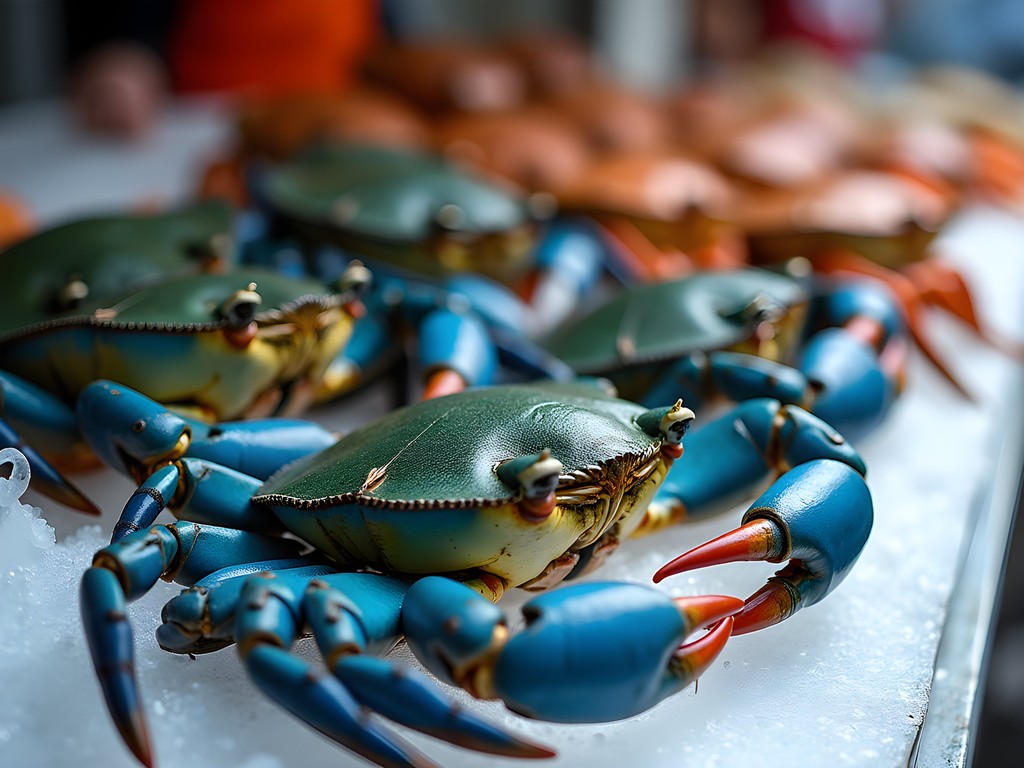
💡 Pro Tips
- Learn basic crab-picking techniques before your visit – it enhances the experience
- The 'J' months (January, June, July) are traditionally considered peak months for crab quality
- Ask locals about their favorite seafood spots – Baltimoreans are passionate about their preferred crab houses
The Legendary Crab Houses of Baltimore
If there's a sacred ritual in Baltimore, it's the crab feast, and the city's historic crab houses serve as its temples. These establishments – often no-frills, paper-on-tables affairs – offer an experience that transcends mere dining.
My first authentic Baltimore crab experience came at L.P. Steamers in Locust Point, a neighborhood spot where I watched multigenerational families expertly dismantling crustaceans while I fumbled with my mallet. The owner, seeing my Spanish-accented struggle, sat down to demonstrate the proper technique – a moment of connection that reminded me how food traditions bridge cultural divides.
For couples seeking the quintessential experience, I recommend setting aside a full evening for your crab feast. This is not a meal to be rushed but savored slowly over conversation and local beers. Bring a crab mallet kit if you're planning multiple seafood adventures during your stay – it's a practical souvenir that will serve you well.
While L.P. Steamers remains a personal favorite, other institutions like Nick's Fish House offer waterfront views that enhance the experience. Captain James Seafood Palace, shaped like a boat, provides that touch of kitsch that somehow feels perfectly Baltimore. Each has its loyal defenders and unique atmosphere.
The traditional preparation – steamed with abundant Old Bay seasoning – allows the crab's natural sweetness to shine while providing that signature spicy counterpoint. Order by the dozen for a couple and expect to spend at least two hours in this delightfully messy endeavor. Some establishments offer paper bibs, but I suggest bringing a waterproof travel case to protect phones and cameras from the inevitable splatter of crab juices.
Remember that true crab houses are seasonal operations, with the best experiences available from late spring through early fall when crabs are at their peak. Call ahead to check availability and prices, which fluctuate based on the day's catch.

💡 Pro Tips
- Wear clothes you don't mind getting messy – crab feasts are inherently splatter-prone
- Most authentic crab houses are cash-only establishments – come prepared
- Bring your own wet wipes as the provided napkins rarely suffice for the mess
Oyster Bars and Raw Seafood Experiences
While crabs may be Baltimore's most famous offering, the city's oyster culture provides a more refined counterpoint that's equally steeped in Chesapeake tradition. As someone who's explored oyster traditions from Portugal's Algarve to Japan's Hokkaido, I find Baltimore's approach distinctively American yet influenced by global techniques.
The Thames Street Oyster House in Fell's Point became my sanctuary during my last summer visit. Sitting at their marble bar watching skilled shuckers work their craft reminded me of the meditative quality I seek in travel experiences. The rotating selection of Chesapeake oysters – with names like Sweet Jesus, Choptank Sweets, and Rappahannock River – offers a literal taste of the region's maritime geography.
What fascinates me as a cultural observer is how Baltimore's oyster scene bridges socioeconomic divides. While some establishments offer sophisticated wine pairings and elegant presentations, others maintain the working-class tradition of oysters as affordable sustenance. You can experience both ends of this spectrum in a single afternoon.
For couples seeking intimacy, I recommend The Local Oyster in Mount Vernon Marketplace, where the communal seating encourages conversation with locals and the knowledgeable staff guides newcomers through regional varieties. Their oyster happy hour (typically 4-7pm on weekdays) offers excellent value without compromising quality.
True oyster aficionados should consider bringing a oyster knife if you plan to purchase fresh oysters from markets like Cross Street or Lexington for enjoyment at your accommodation. There's something deeply satisfying about mastering this skill, though it requires practice and caution.
Beyond oysters, Baltimore's raw bars typically feature excellent ceviche, poke, and crudo preparations that showcase the freshness of local fish. These lighter options provide perfect balance to the heavier crab feasts that might anchor your culinary journey.
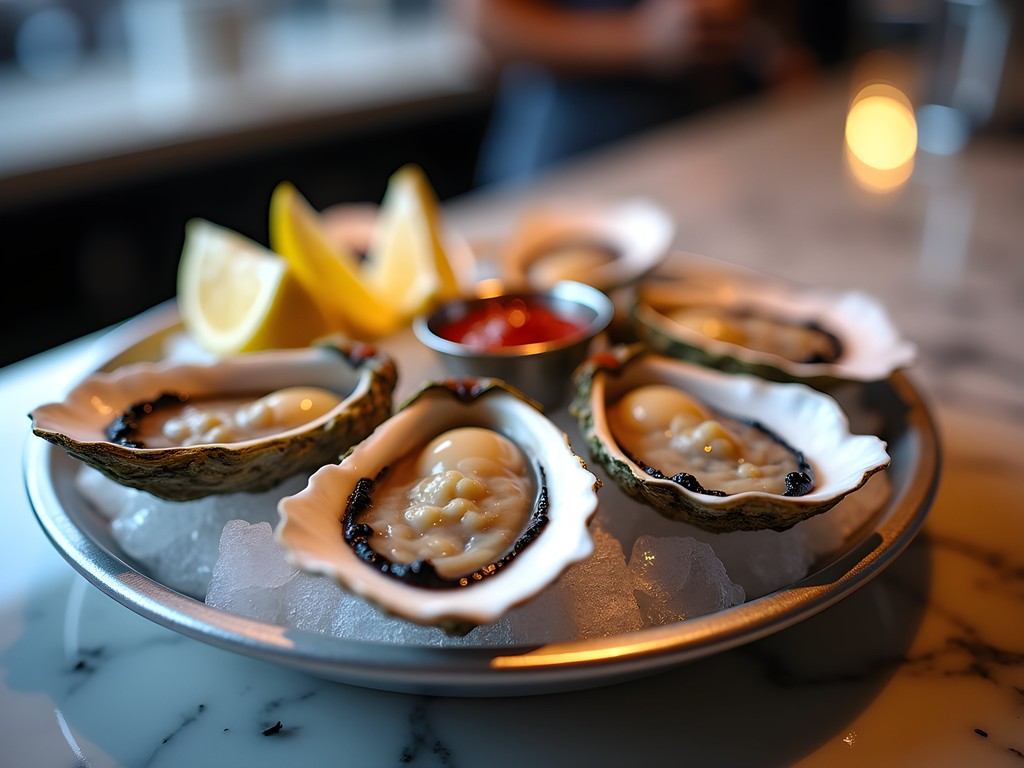
💡 Pro Tips
- Ask about the specific harvesting locations of oysters – each area of the Chesapeake imparts distinct flavors
- Pair local oysters with Maryland craft beers rather than traditional wine for an authentic regional experience
- Visit oyster bars during weekday happy hours for the best value without weekend crowds
Waterfront Dining with Harbor Views
There's something undeniably romantic about dining beside water, a universal truth I've encountered from Barcelona's Port Vell to Lisbon's riverside restaurants. Baltimore's Inner Harbor and surrounding waterfront neighborhoods offer this same magic, with the added dimension of watching working boats navigate the same waters that provided your meal.
For couples seeking that perfect sunset dinner, Rusty Scupper provides panoramic harbor views that transform from daytime postcard to evening romance as the city lights reflect off the water. While admittedly more tourist-oriented than some local favorites, the combination of fresh seafood and unmatched vistas makes it worth considering for at least one meal.
More intimate and locally-beloved is Mama's on the Half Shell in Canton, where the second-floor dining room offers water views without the premium pricing of prime harbor locations. Their orange crush cocktails – a Maryland specialty made with fresh-squeezed orange juice, vodka, triple sec, and sprite – pair perfectly with seafood and sunset views.
For a truly memorable experience that combines dining with exploration, consider booking a sunset dinner cruise that allows you to enjoy Chesapeake specialties while sailing past Fort McHenry and under the Francis Scott Key Bridge. These typically 2-3 hour excursions offer a unique perspective on the city while serving regional cuisine.
What I find psychologically fascinating about waterfront dining is how it connects us to food sources in an increasingly disconnected culinary world. Watching crab boats return to harbor while enjoying their catch creates a moment of mindfulness about consumption that enhances the experience beyond mere flavor.
During summer months, outdoor seating is at a premium, so make reservations well in advance for prime sunset times. Many waterfront establishments offer blankets for when evening breezes pick up – a thoughtful touch that encourages lingering over dessert or digestifs as the harbor lights twinkle to life.

💡 Pro Tips
- Request waterfront tables when making reservations – they're often allocated on a first-come basis
- Consider late afternoon dining (4-5pm) to enjoy both daylight and sunset views during your meal
- Many waterfront restaurants offer validated parking – ask when booking to avoid expensive harbor garages
Beyond Crabs: Baltimore's Seafood Diversity
While Maryland's blue crabs justifiably claim the spotlight, Baltimore's seafood scene offers remarkable diversity that rewards the curious diner. My counselor's instinct to look beyond obvious narratives has led me to some of the city's most satisfying culinary discoveries.
Rockfish (striped bass) represents Maryland's official state fish and appears on menus in preparations ranging from simple grilled fillets that showcase its mild, flaky character to more elaborate interpretations. Thames Street Oyster House serves a pan-seared version with seasonal accompaniments that highlights the fish's versatility.
The peculiarly named 'lake trout' deserves special attention as a Baltimore specialty. Despite the misleading name, this dish typically features Atlantic whiting, breaded and deep-fried to crispy perfection. Found primarily in carryout spots in historically Black neighborhoods, authentic lake trout comes wrapped in paper with white bread and hot sauce – a cultural experience as much as a culinary one.
For those seeking lighter fare between indulgent meals, Baltimore's seafood markets offer ready-to-eat options worth exploring. The cross-cultural crab soup traditions – both the cream-based Eastern Shore style and the tomato-based Maryland vegetable crab – provide insight into regional variations within Chesapeake cuisine.
Don't overlook the humble coddie, a Baltimore specialty consisting of salt cod and potato formed into a cake, fried, and traditionally served between saltine crackers with yellow mustard. These unpretentious snacks connect to the city's working-class roots and immigrant influences.
For home cooks wanting to recreate Baltimore flavors, I recommend picking up a tin of Old Bay seasoning and a jar of local honey to bring home. These simple ingredients capture the essence of Maryland's sweet-spicy flavor profile and make thoughtful gifts for food-loving friends.
What fascinates me about Baltimore's seafood diversity is how it reflects waves of immigration and cultural exchange – from British colonial influences to German brewing traditions to Polish and Italian seafood preparations, all adapted to local ingredients. This culinary evolution mirrors my own mixed heritage and reminds me that identity is rarely simple or static.
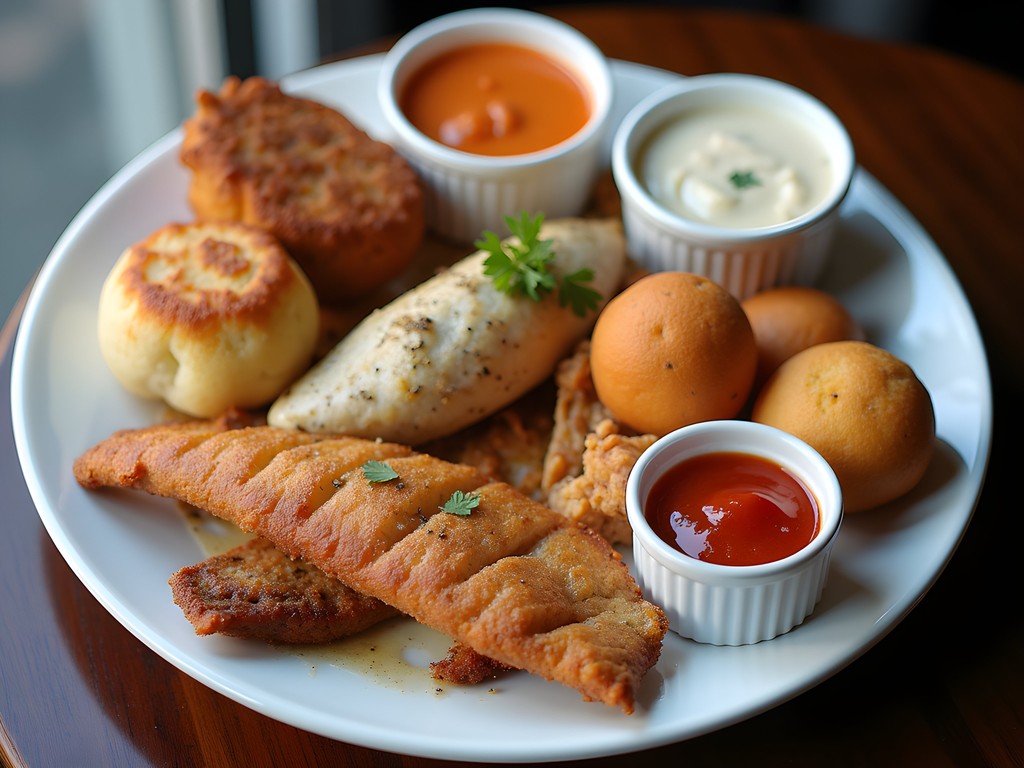
💡 Pro Tips
- Ask about daily specials featuring seasonal fish beyond the standard menu offerings
- Explore neighborhoods beyond the tourist center for authentic regional specialties like lake trout
- Visit the Broadway Market in Fell's Point for a variety of quick seafood options in a historic setting
Markets and Seafood Shopping Experiences
One of my favorite ways to understand a city's food culture is through its markets, where commerce and community intersect in revealing ways. Baltimore offers several exceptional seafood markets that provide both culinary souvenirs and windows into local life.
Lexington Market, operating since 1782, stands as one of America's oldest continuously running markets. While undergoing revitalization in recent years, it retains authentic seafood vendors where you can observe the morning ritual of regulars selecting the day's catch. Faidley's Seafood within the market serves what many consider Baltimore's definitive crab cake – a nearly pure-lump preparation held together by minimal binder and seasoning.
For couples staying in accommodations with kitchen access, Cross Street Market in Federal Hill offers the opportunity to purchase fresh seafood for your own preparation. During my last visit, I bought plump scallops and prepared a simple seared dish with local produce – creating a private dining experience that connected me to the region's bounty.
The Sunday farmers' market under the Jones Falls Expressway (known locally as the JFX Market) occasionally features vendors selling live blue crabs direct from watermen. Watching the careful selection process as locals choose their crabs offers insight into quality assessment – look for heavy, lively specimens with firm shells.
For those planning to prepare seafood themselves, I recommend picking up a quality seafood preparation kit which enhances simple cooking methods with subtle wood smoke flavors. Cedar plank cooking particularly complements Chesapeake rockfish and bluefish.
Beyond fresh seafood, Baltimore's markets offer exceptional prepared foods and pantry items. Look for small-batch hot sauces featuring local fish pepper (a heritage variety being revived by area farmers), locally produced seafood seasonings beyond the ubiquitous Old Bay, and Maryland wine from emerging Chesapeake vineyards.
What strikes me about Baltimore's market culture is how it preserves direct connections between producers and consumers in an era of food system abstraction. Much like the markets of my childhood in Barcelona, these spaces foster relationships and knowledge transfer that supermarkets simply cannot replicate.

💡 Pro Tips
- Visit markets early for the best selection – most seafood vendors are substantially sold out by early afternoon
- Bring an insulated bag with ice packs if purchasing seafood for later preparation
- Ask vendors for preparation suggestions – they often share family recipes and techniques freely
Final Thoughts
As I stand at the harbor's edge on my final evening in Baltimore, watching fishing boats return with the day's catch, I'm struck by how this city's relationship with seafood transcends mere sustenance. The Chesapeake traditions – from communal crab feasts to oyster appreciation – offer something increasingly rare in our disconnected world: food experiences that genuinely bring people together in shared ritual. For couples seeking connection through culinary exploration, Baltimore provides not just exceptional seafood but a window into a way of life shaped by these tidal waters for centuries. Whether you're cracking crabs at a paper-covered table, savoring oysters at a polished bar, or simply watching the sunset with rockfish and local wine, the flavors of Baltimore create spaces for authentic moments together. Hasta la próxima, until we meet again – may your journey through Chesapeake cuisine be as rewarding as the sweet meat hidden within a perfectly steamed blue crab.
✨ Key Takeaways
- Baltimore's seafood scene offers experiences at every price point, from working-class crab houses to refined waterfront dining
- Beyond famous blue crabs, explore regional specialties like rockfish, lake trout, and distinctive crab soups
- The best seafood experiences often come with a side of cultural history and community connection
- Summer offers peak crab season, but Baltimore's seafood scene has something to offer year-round
📋 Practical Information
Best Time to Visit
Late May through September for peak crab season
Budget Estimate
$75-150 per person per day for meals and food experiences
Recommended Duration
2-3 days for a comprehensive seafood exploration
Difficulty Level
Beginner

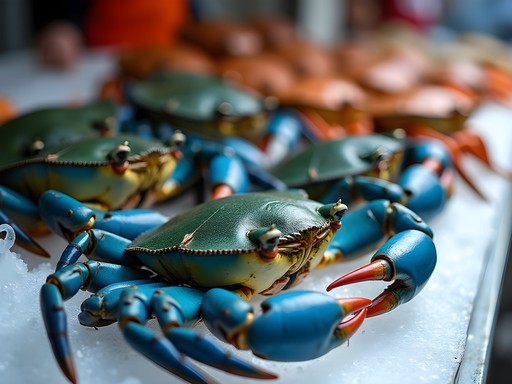
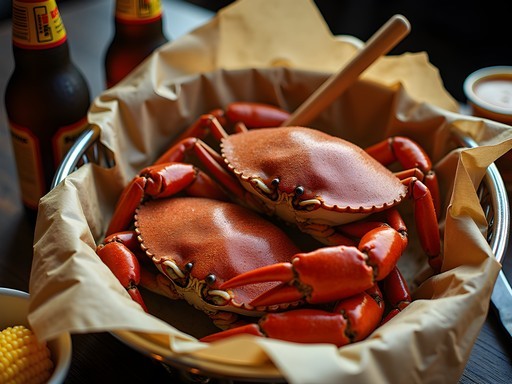
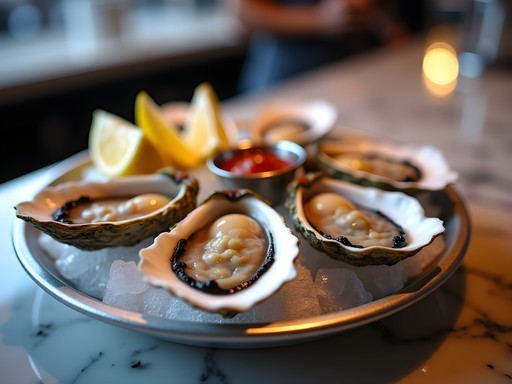
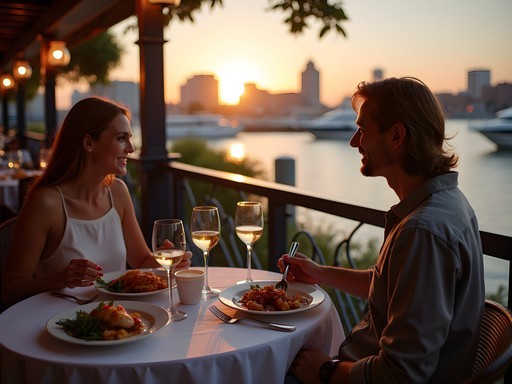




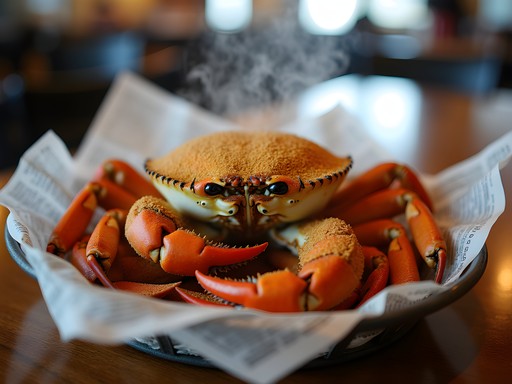

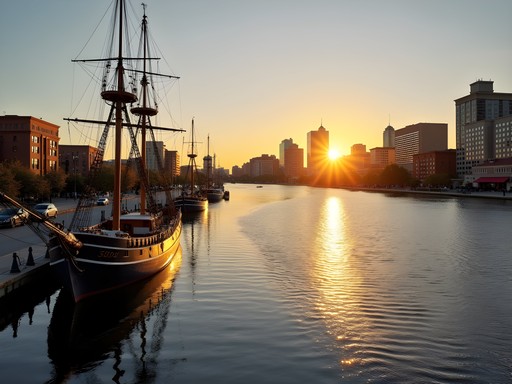

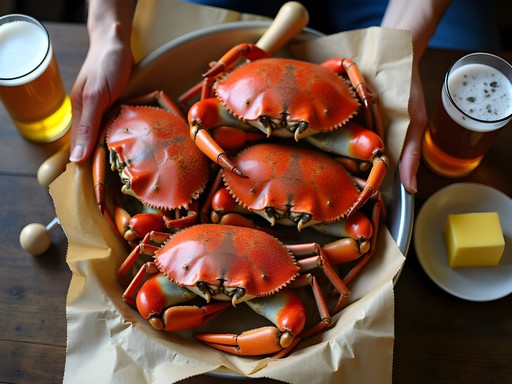



Comments
Douglas Bradley
Great write-up on Baltimore's seafood, Liam. Having covered the Mid-Atlantic extensively for my blog, I'd add that visitors should also explore the markets where locals get their seafood. The cross-cultural influences at markets like Lexington and Broadway are fascinating - Korean-influenced crab preparations, immigrant-owned stalls selling fusion dishes that wouldn't make it to tourist spots. Also, for those wanting the experience without the premium harbor prices, head to neighborhoods like Canton or Highlandtown where locals eat. Cantler's in Annapolis is worth the short drive too if you have a car - authentic waterman's experience away from the city center.
travelseeker
Those crab feast photos have me drooling! Perfect timing as I'm planning a weekend trip there!
skydiver
Great post! Is there anything worth trying in Baltimore beyond seafood? Will be there for a conference and have some dietary restrictions in my group.
Douglas Bradley
Baltimore has a surprisingly diverse food scene! Check out the restaurants in Hampden for hipster fare, Little Italy for obvious reasons, or the food halls like R. House or Cross Street Market for options that'll satisfy everyone in your group.
Jean Wells
Having lived in Maryland for nearly a decade before moving to Japan, I can attest that Liam has captured the essence of Baltimore's seafood culture beautifully. One aspect worth noting is the seasonality - while you can get crab year-round, locals know the sweetest meat comes during summer months (May-September). Winter visitors should focus on oysters instead, which are at their prime when months contain the letter 'R' (September-April). I still remember my ritual of bringing visitors to Thames Street Oyster House in Fells Point and watching their expressions at their first Chesapeake oyster experience. I'd recommend picking up seafood guide if you want to recreate some of these flavors at home.
skydiver
Thanks for the seasonal tip! Planning a trip in April and wasn't sure if that was too early for the full experience. Sounds like I should focus on oysters then?
Jean Wells
Exactly! April is prime oyster season but just before peak crab. You'll still find crab cakes and other preparations, but for the full-on crab feast experience with mallets and paper, summer is better.
travelfan
Those harbor views look amazing! Adding Baltimore to my 2026 list!
luckybackpacker
Just got back from Baltimore last week and the blue crab experience is EVERYTHING Liam described! We hit up LP Steamers in Locust Point and literally spent 3 hours hammering away at a feast with paper towels up to our elbows. The Old Bay seasoning gets EVERYWHERE but that's part of the charm! Anyone heading there needs to learn the crab picking technique beforehand or you'll waste half the meat like I did my first try 😂
Douglas Bradley
LP Steamers is solid, but did you make it to Faidley's in Lexington Market for their crab cakes? Absolute institution and worth dealing with the market crowds.
luckybackpacker
Missed Faidley's! Definitely adding it to the list for next time. The locals at our hotel were divided between there and Koco's Pub for best crab cake.
journeybuddy
Pro tip for anyone visiting: locals told me the best crab deals are actually Monday through Thursday. Weekend prices can be much higher when tourists flood in!
seafoodjunkie
Those blue crabs look AMAZING! Definitely adding Baltimore to my must-visit list!
mountainway2263
Just got back from Baltimore and tried Thames Street Oyster House. Those oysters were life-changing!
mountainwanderer
Been visiting Baltimore for 20+ years and still discovering new seafood spots. Don't sleep on the rockfish (striped bass) when it's in season - a local specialty that doesn't get enough attention! Thames Street Oyster House in Fells Point does an amazing preparation. Also, for visitors who don't want to deal with picking crabs but want the flavor, try crab soup - both the cream-based and tomato-based Maryland versions are fantastic.
hikingseeker
Thanks for the rockfish tip! Any particular month when it's best?
mountainwanderer
Fall is prime rockfish season in the Chesapeake - October and November especially. The cooler water makes them migrate and feed more actively.
Venture X
Premium card with 2X miles, $300 travel credit, Priority Pass